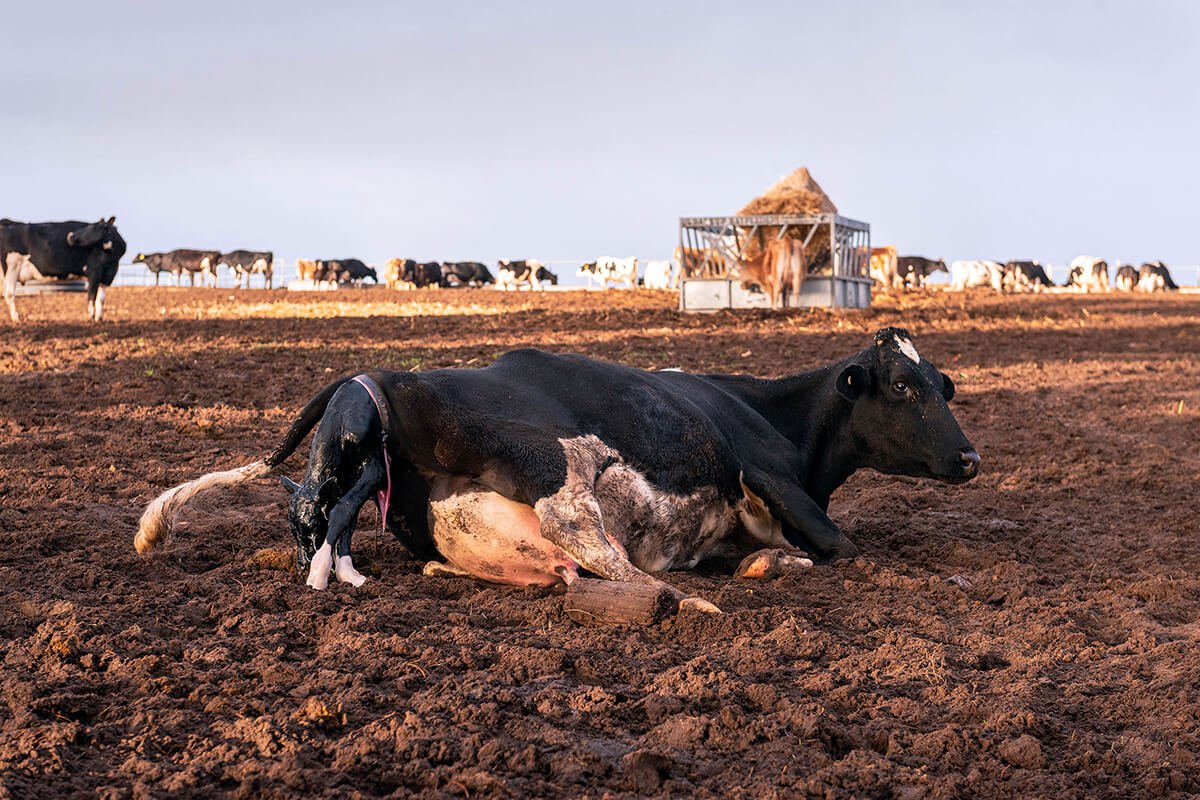INTERVIEW
Art and Activism
WITH KAROLIINA KASE
An interview with Karoliina Kase
“Producing fine art projects became meaningless to me in a time when we are collectively destroying our planet. Dedicating my photography to a cause gave me a purpose.”
Karoliina Kase is an Estonian-born photographer whose photographic studies have taken her to Costa Rica and the United States. With a background in fine art she now focuses on documentary storytelling, interested in civilization at large and in particular humanity’s relationship with fellow species and the natural environment.
Karoliina won our Animal Kingdom competition, judged by Tim Flach, with a stunning yet troubling image of a dead spotted harrier caught in a barbed wire fence. keen to know more about that image, the project it’s from, her transition from fine art to documentary work and her photographic approach, we put some questions to her…
*** Please be warned that this article contains images of animal death and cruelty that viewers may find disturbing. ***
Hi Karoliina. Firstly, congratulations on winning our Animal Kingdom competition. What did you make of the judge Tim Flach’s comments?
Thank you! Tim said, “While the bird may already be dead there is a feeling of torture or inability to escape the clutch of human intrusion,” which sums up my initial reaction when I first saw the spotted harrier caught up in the fence. I imagined how the animal must have struggled to break free and how awful its last moments were in a man-made trap.
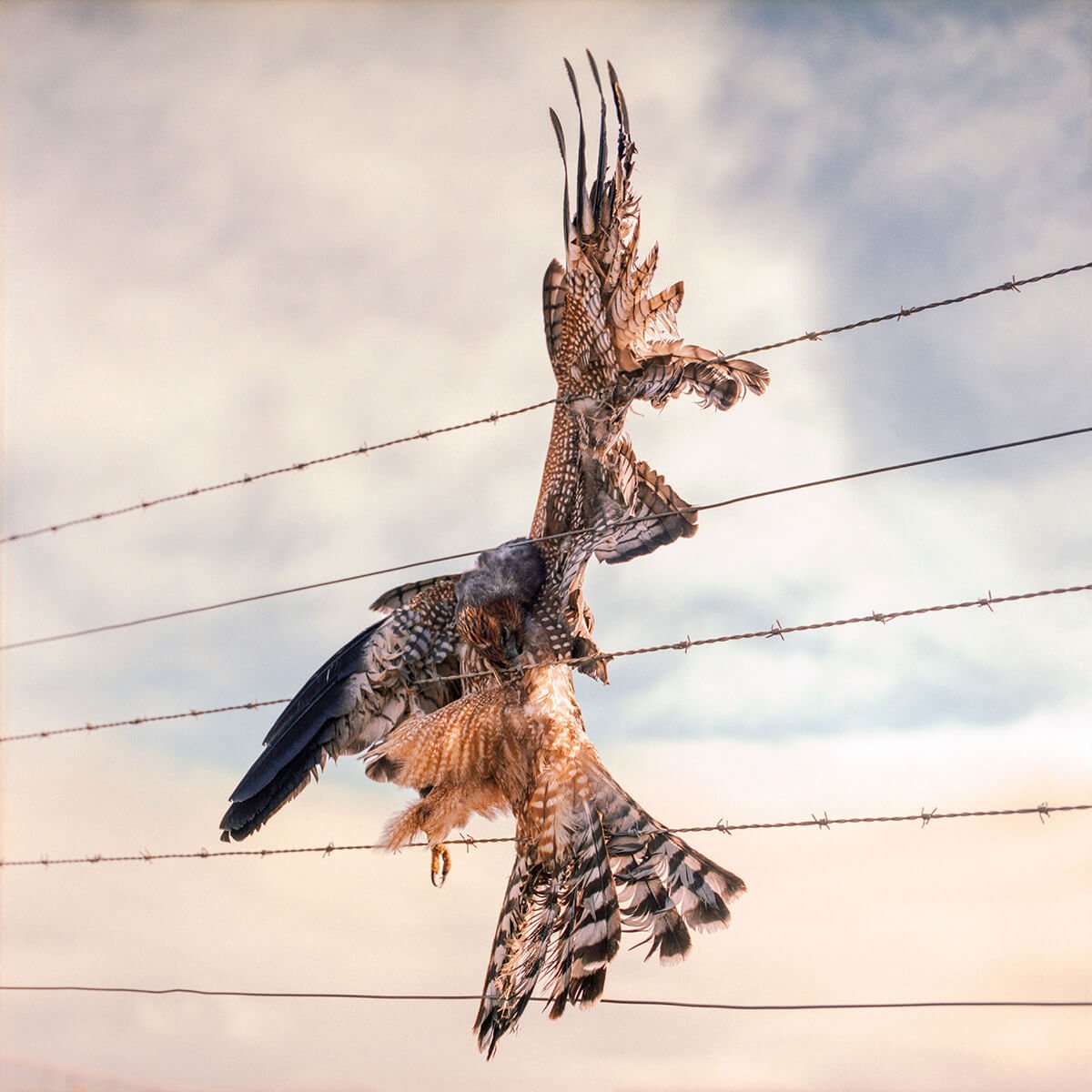
ANIMAL KINGDOM COMPETITION: KAROLIINA’S WINNING IMAGE
I understand it’s from your series “To all the Bobbies out there”. Tell us a bit about that – the story you’re telling and how it came about…
The series was a response and a coping mechanism to an awful period in my life. I moved to Australia on a Working Holiday visa in 2019, and in order to extend my stay in the country I had to complete 88 days of specified regional work. I got my first full-time job on a dairy farm. At the time, I had already given up eating meat due to animal welfare concerns, but I didn’t know the dairy industry is similarly harmful or fatal to the animals. I considered myself an animal lover.
During my first milking shift, part of my world view collapsed. The cows were afraid of people. The animals were just numbers in a computer system and treated as such. Sick cows weren’t properly looked after, they were merely kept alive. We made the animals do what we wanted, so we could mechanically extract all of their milk, which was meant for the calves who are taken away. To me it seemed wrong and violating.
I wanted to leave this place, but after putting up with the job a few more days, I decided to stay and document what happens on an average dairy farm. I wanted to share the tragic lives of these animals, but also draw attention to environmental degradation and worker exploitation within the industry. At the same time, the series gave a purpose to my own suffering on the job. It was depressing to witness the suffering and countless animal deaths on the farm, while I was unable to do much.
And what about this winning image in particular? While captured beautifully, it’s quite a troubling image…
I first noticed the dead bird when I was driving to my morning shift. I knew I had to take a photo of this scene, and since sick or dead animals were not a priority on the farm, the spotted harrier was still in the fence after I had finished work.
A beautiful bird of prey perished in a low barb wire fence is indeed a sad sight. But it was important to capture this image to show how not only farmed animals suffer in the industry. Our consumption of animal products comes at the expense of wildlife. We destroy habitats, block migration, and poison water. The image captures an unintended and unnecessary death. And if we feel sad for the suffering and loss of this wild animal, we should also do so for the billions of farmed animals.
Working on the series was a formative experience for you, and you mention that it has led you to engage in environmental and animal rights activism. Tell us a bit more about that…
I was engaged in environmental activism even before I moved to Australia. In Estonia, my main focus was protecting our disappearing forests. One of our most notable successes was mobilising our community to block the construction of a billion-euro pulp mill in my home town.
Since the production of To All the Bobbies Out There, I have been asked to work on a few projects and give presentations within the animals rights movement. I’m looking forward to joining local environmental and animal rights groups once I’m able to settle down in one place again. My long-term goal is to open a farm animal sanctuary back in Estonia.
The shift towards activism also took place in my art practice as I moved away from fine art to documentary photography. I was in an artistic slump after college, as producing fine art projects became meaningless to me in a time when we are collectively destroying our planet. Dedicating my photography to a cause gave me a purpose.
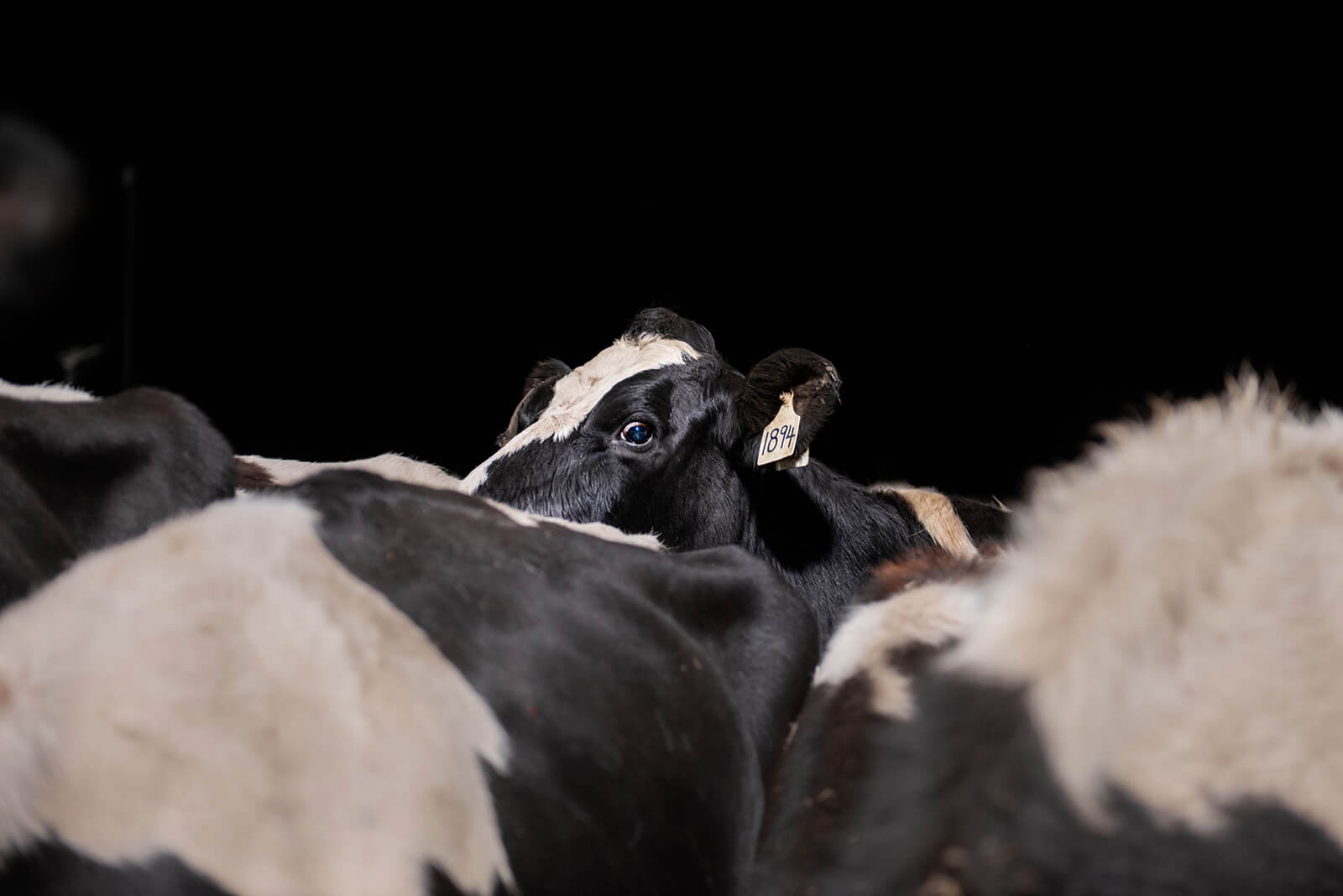
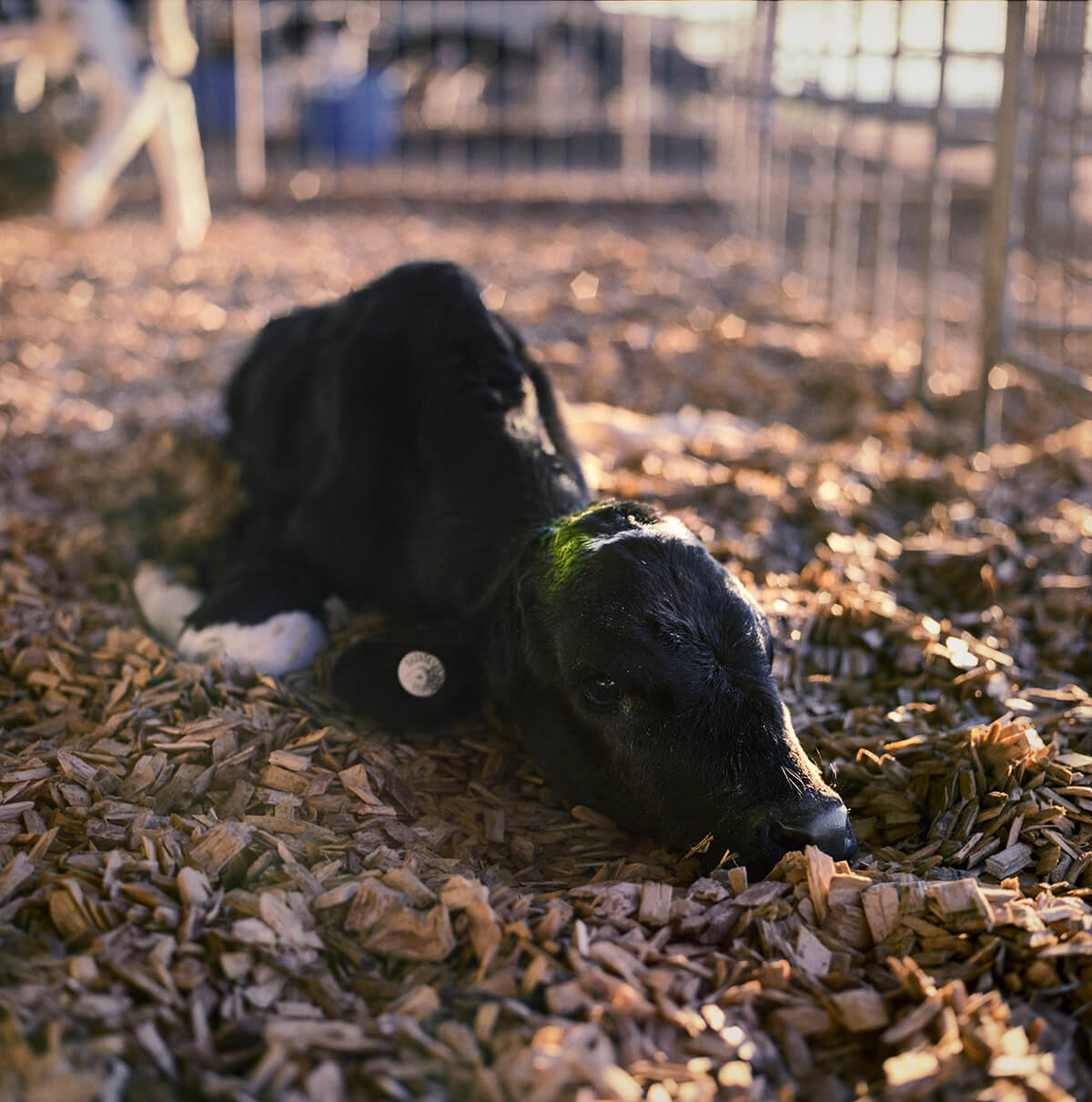
BOBBY CALF
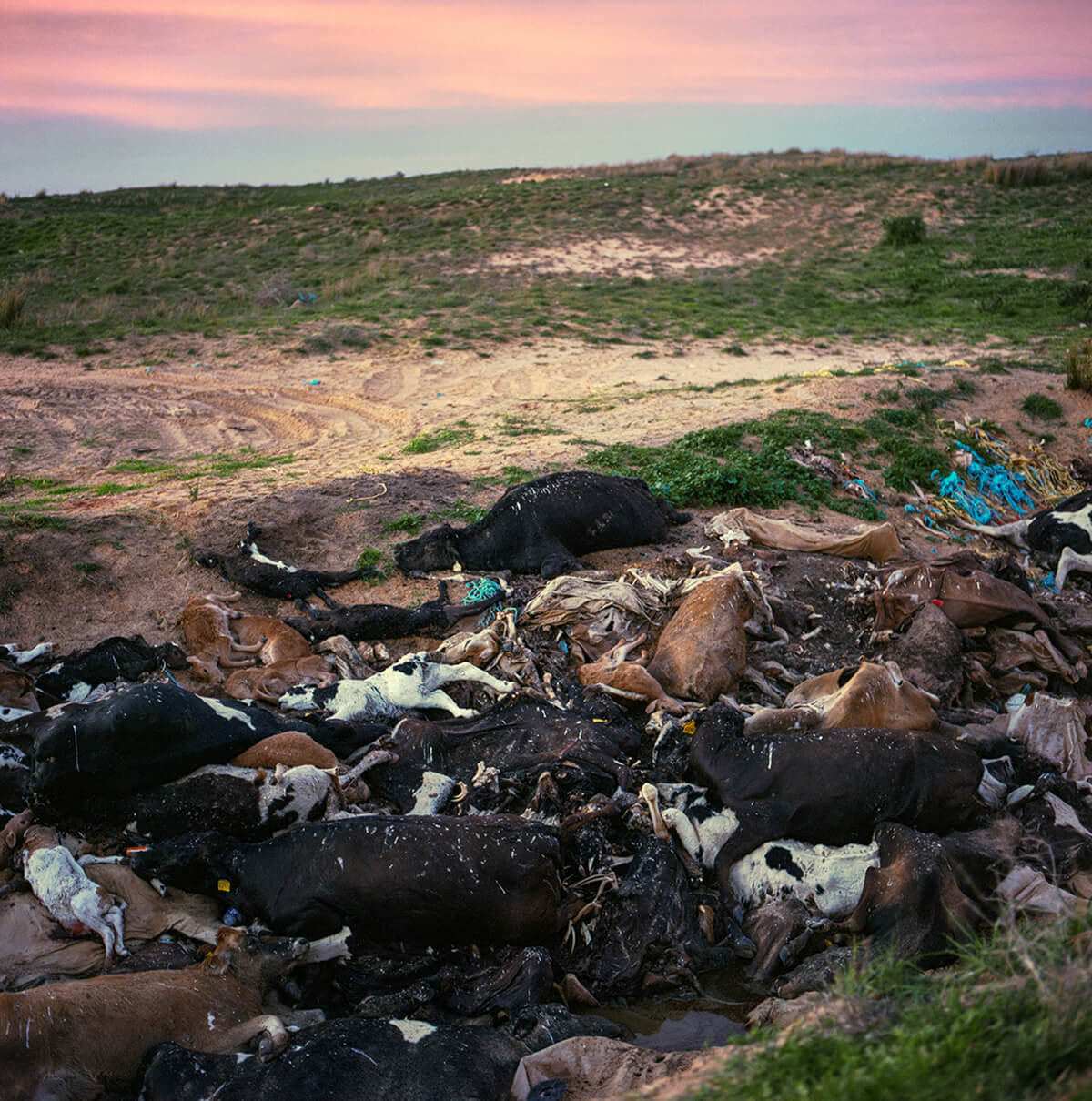
MASS GRAVE
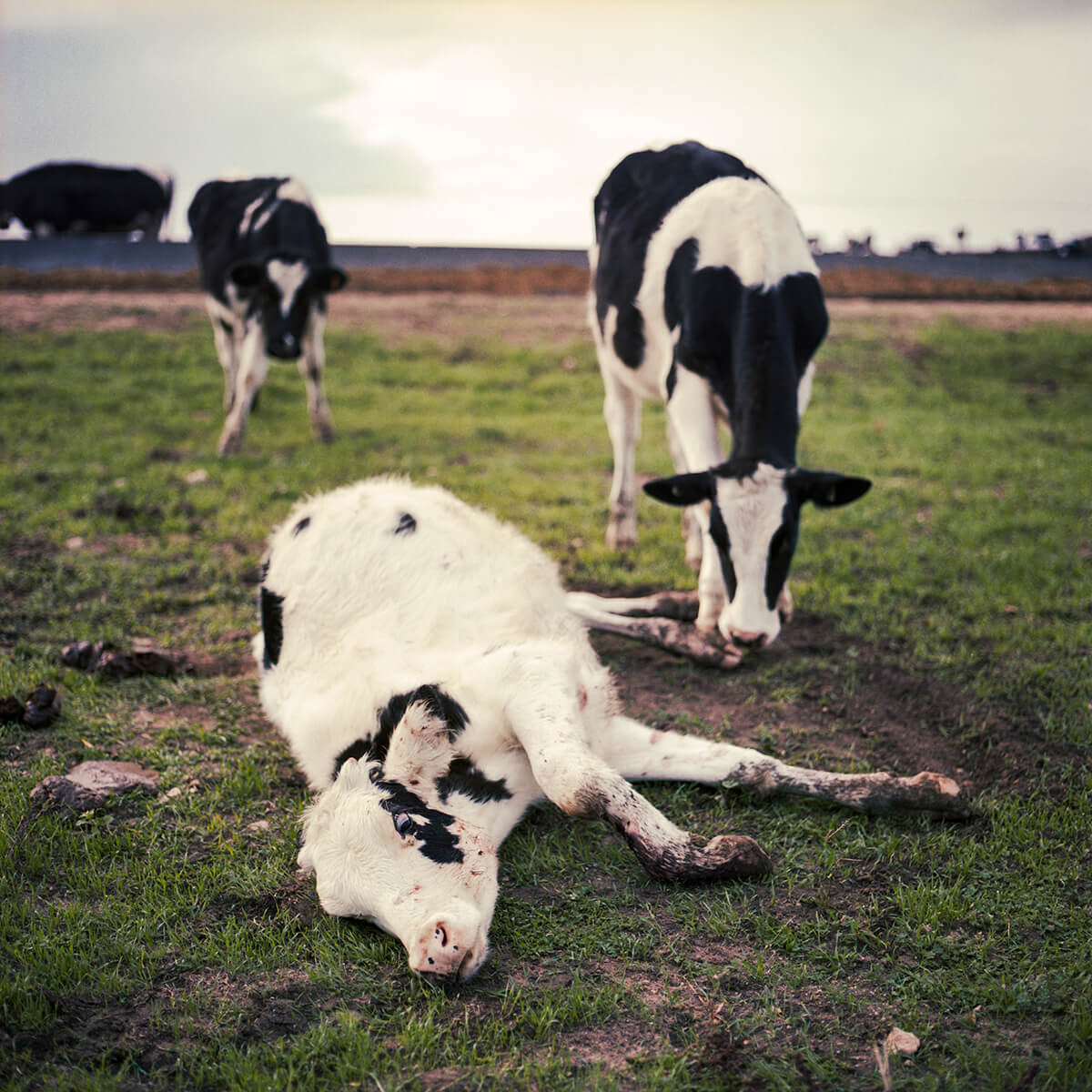
CALF WITH A BROKEN LEG
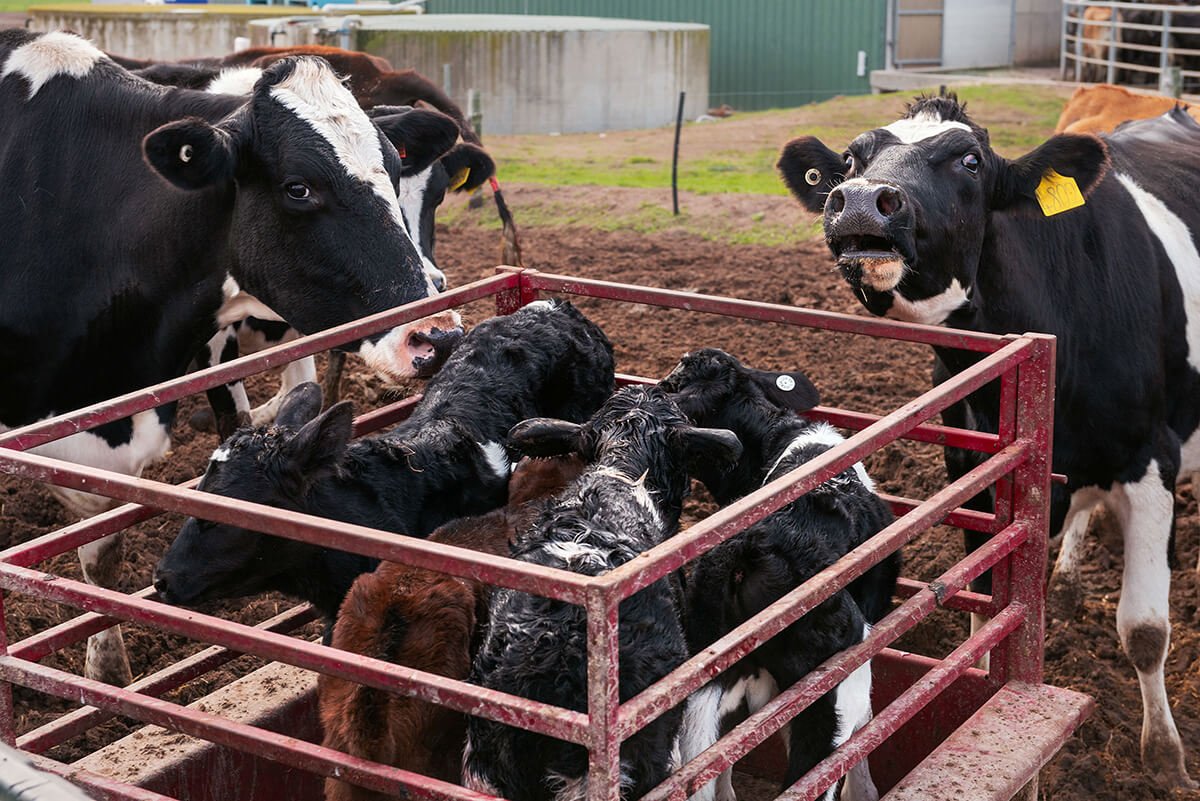
CALVES BEING SEPARATED FROM THEIR MOTHERS
Perhaps you could talk through a couple of your other favorite, or most important images from the series?
[Ed: See above] The first, “Bobby Calf”, is an image of a bobby or male calf who probably had suffered a brain injury, which resulted in him being disabled. He had a large bony frame and he was only able to slightly move his head. While bobby or male calves are sent to the slaughterhouse at maximum two weeks of age, it is illegal to transport young animals in such poor condition. Unfortunately, there’s no one to check animal welfare standards on most farms and he was trucked to the slaughterhouse with the rest of the male calves.
The next, “Mass Grave”, depicts the animals who died or had to be killed on the farm in the span of a few months. The rest of them end up in the slaughterhouse. Dairy farming results in the death of all these animals, but many people do not know or admit to this. The scale of death in animal agriculture is incomprehensible. It’s a confronting and difficult photo, but unless we face the consequences of our choices, we will never make things right.
The next, “Calf with a Broken Leg”, portrays a calf who broke her leg while trying to escape a paddock. Such an injury is a death sentence in the industry. Due to the lack of workers and time, the calf was left to lay there for many hours before she was killed. I chose this image to show how most suffering on farms is not the result of people physically torturing the animals, but due to overworked, inexperienced workers, and the lack of resources to deal with the needs of individual animals.
And finally, “Calves Being Separated from their Mothers” is one of the least aesthetic photos of the series, but it portrays a crucial part of the dairy industry–breaking up families. One calf in the image is still covered in birth fluids and the mothers are clearly distressed by the separation. Unfortunately, cows have to go through this several times during their short lives. People say the animals forget about their family, but that’s not what I witnessed on the farm.
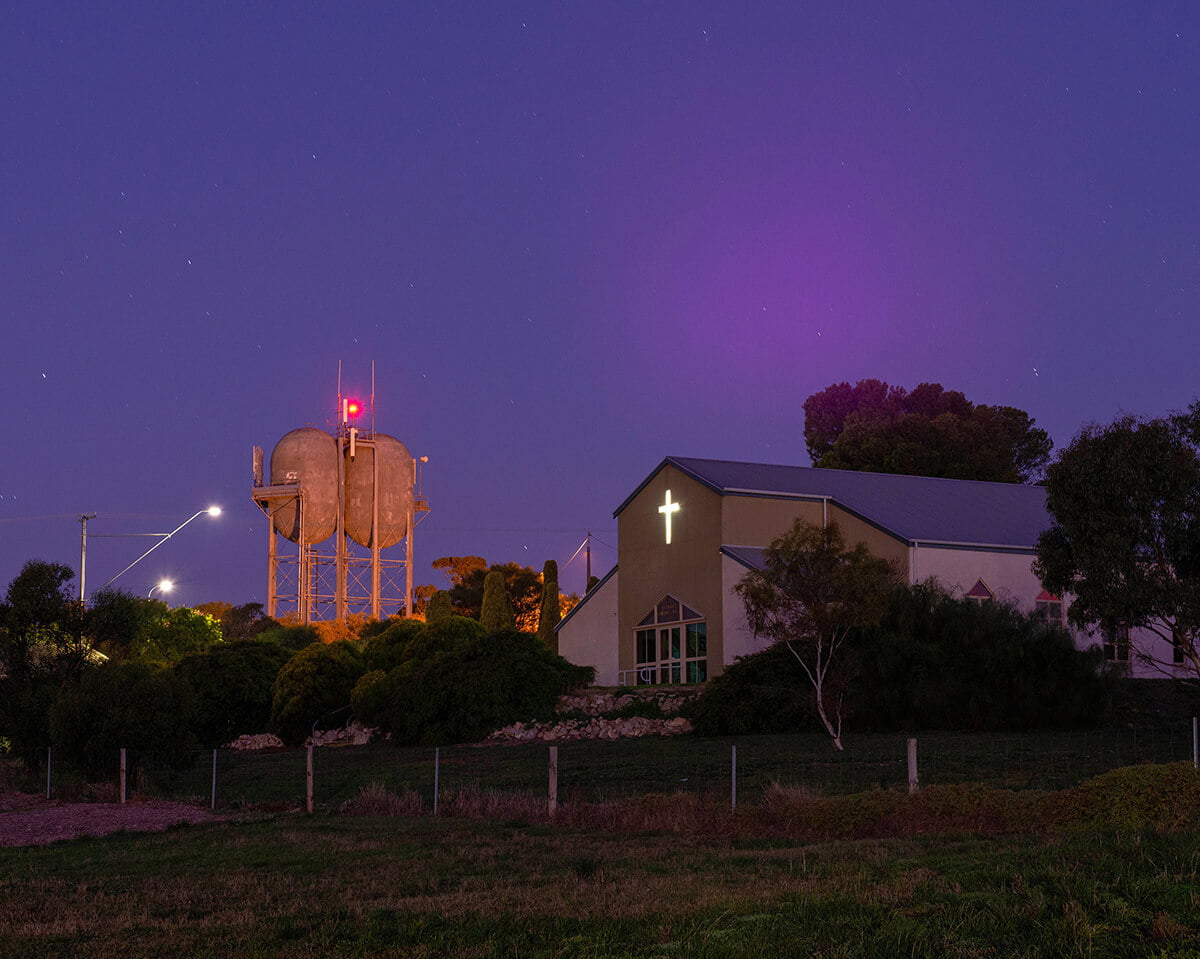
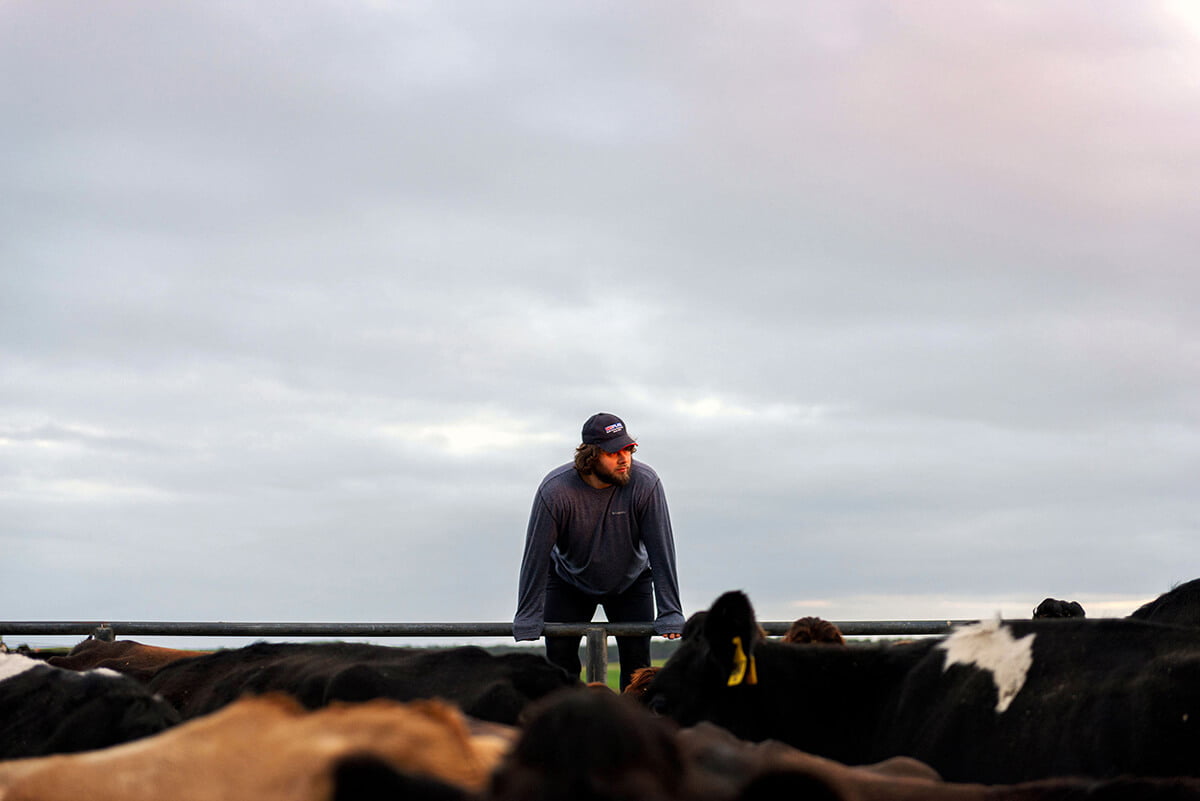
Your interest in animals has continued with your recent series Isolation Dialogues, an initiative by the Tallinn Museum of Photography in which you created work in response to that of another photographer. It sounds like a really interesting experience – How was it? Did you enjoy this challenge?
It was a lot of fun creating work in response to another photographer’s images. We were only allowed to exchange photos; no other form of communication was permitted. My dialogue partner, Iris Kivisalu, was in Estonia, while I was in rural Australia.
I usually photograph scenery which I believe should be documented or an image comes up in my mind and I try to capture that in real life. This project forced me to experiment and create in unfamiliar ways. I would gladly continue working on such a dialogue as I think it helped me grow as a creative and it was a joy to interpret and photograph in response to someone I barely know.
It’s a creative response to the challenges imposed by the COVID-19 pandemic. How has the pandemic impacted you generally? Has it forced or prompted you to adapt your practice? Or to start or stop projects?
Fortunately, I can say that not much changed in my life. On the other hand, the crisis has confirmed my understanding that we are entering an unknown and an unstable period within our civilization and on this planet. Given our response to this pandemic, I think it’s evident we are not able to handle issues like climate change in a meaningful way. The latter does not mean that I stand for inaction–conversely, I think we should salvage as much life as possible. Hence my own dedication to documentary photography and activist movements.
If there’s one piece of advice you could pass on to your younger self, what would it be?
To trust myself more and not let myself be affected by the opinion of others. This is specifically related to my pursuit of the arts. When I was as young as 3 years old, I wanted to be an artist. Yet, in college and shortly after, I started to feel the pressure to get a stable and well-paying job. Furthermore, I was constantly bombarded with unsolicited advice from friends and family about what I should do and how I should do it. I definitely let it get to me. Now I’m confident in my unconventional goals, which require an unconventional approach.
And finally, what’s keeping you busy right now?
I’ve been asked to do some writing for a magazine and a vegan platform in relation to my experiences on the dairy farm. I was also asked to produce a short film featuring my images from the dairy farm project for a film festival. At the same time, I am now starting to edit images from my newest project, where I document rural Australia in the age of extinction. So, I am quite overwhelmed with projects, but I am glad my work is starting to fulfil its purpose.
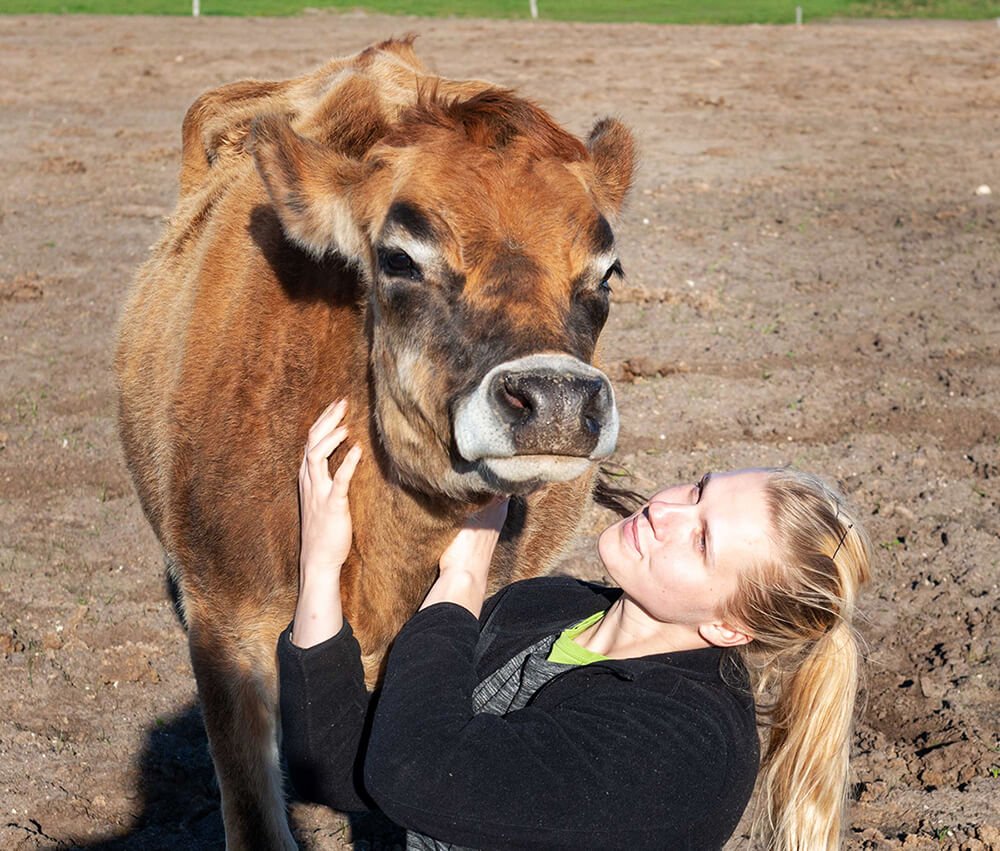
KAROLIINA WITH A COW
All images © Karoliina Kase
Follow her on Instagram @karoliinakase and see more at www.karoliinakase.com
